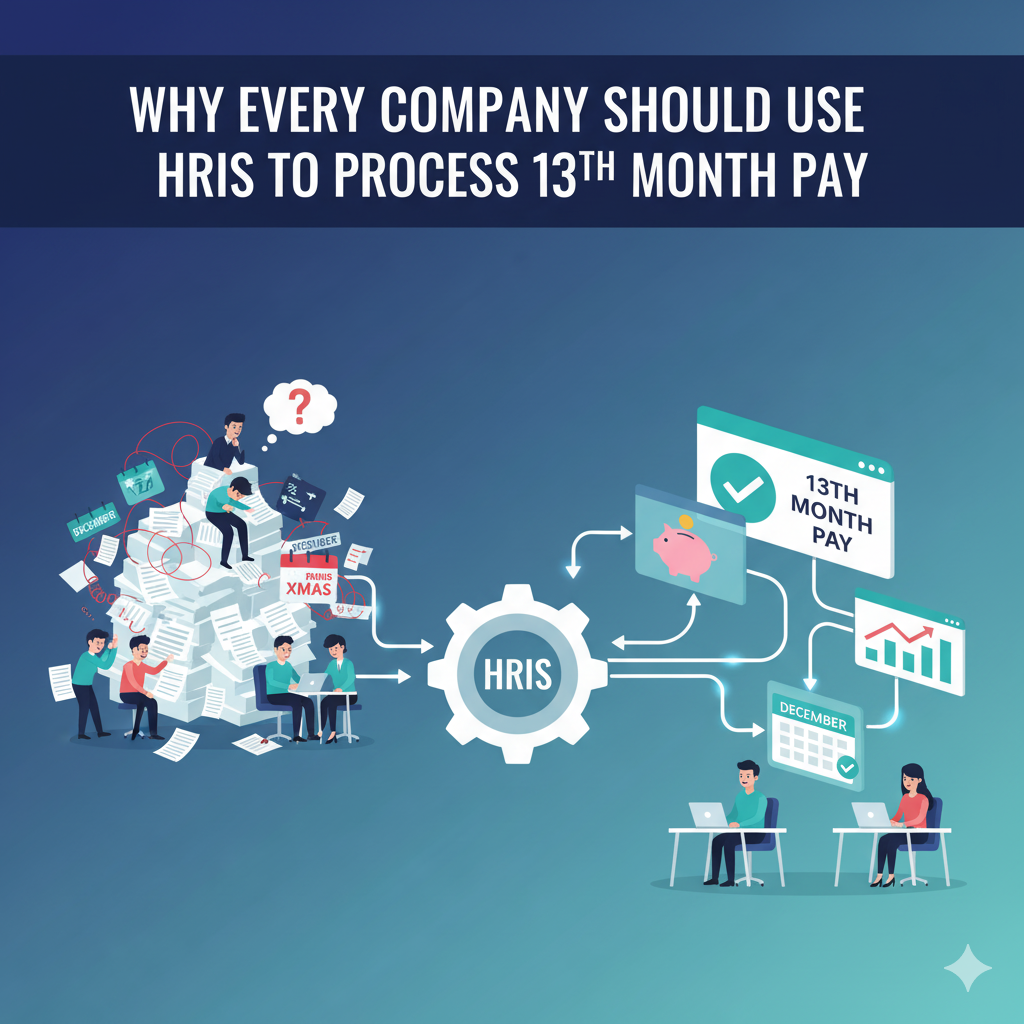As the year comes to a close, one of the most anticipated moments for employees — and one of the busiest for HR — is 13th month pay processing. For many organizations, handling this mandatory year-end bonus can be time-consuming, error-prone, and stressful, especially when done manually.
The solution? A Human Resource Information System (HRIS) that automates, simplifies, and secures the 13th month pay computation and distribution process.
Here’s why every company, big or small, should use HRIS to manage this crucial payroll task.
What Is 13th Month Pay?
The 13th month pay is a mandatory benefit in many countries, such as the Philippines, where it’s legally required under Presidential Decree No. 851.
It’s equivalent to one-twelfth (1/12) of an employee’s total basic salary earned within a calendar year and must be paid on or before December 24.
While the concept sounds simple, the actual computation can become complex — especially for companies managing hundreds of employees, various pay structures, absences, and prorated salaries.
This is where HRIS transforms the process from manual chaos into automated precision.
Challenges of Manual 13th Month Pay Computation
Traditional or spreadsheet-based payroll processes often face these challenges:
❌ Human error in salary data entry or formula application
❌ Inconsistent computations for prorated employees or those with variable pay
❌ Difficulty consolidating data across multiple branches or departments
❌ Compliance risks due to miscalculations or late payments
❌ Time-consuming cross-checking between HR, finance, and management
Manual systems strain HR teams and increase the risk of costly mistakes — which can damage employee trust and regulatory compliance.
How HRIS Simplifies 13th Month Pay Processing
A Human Resource Information System automates the 13th month pay computation, ensuring accuracy, transparency, and timeliness. Here’s how:
- Automatic Computation Based on Payroll Data
HRIS systems automatically calculate the 13th month pay using employee salary records stored within the system — factoring in basic pay, prorated months, and any adjustments.
No more manual formulas or guesswork. - Integration with Attendance and Leave Records
Since HRIS is linked to time tracking and leave modules, it automatically adjusts the computation for employees with absences, unpaid leaves, or partial service during the year. - Prorated and Customizable Calculations
Whether an employee joined mid-year or resigned before December, HRIS applies custom rules to compute accurate prorated pay.
You can configure it to match your company’s unique policy or local labor regulations. - Real-Time Reporting and Audit Trail
Generate summary reports, individual computation sheets, and ledger postings instantly.
Each transaction is recorded for audit and compliance — a major advantage during financial reviews. - Secure and Confidential Processing
Private employee information and bonus amounts are protected through role-based access control, ensuring data privacy and security during payroll runs.
Benefits of Using HRIS for 13th Month Pay
Implementing HRIS for 13th month pay processing delivers multiple business benefits:
✅ 1. Accuracy You Can Trust
Eliminate manual computation errors. HRIS uses verified payroll data to calculate bonuses precisely — every time.
✅ 2. Faster Payroll Turnaround
What once took days of manual work can now be completed in minutes through automation. HR teams can focus on year-end tasks instead of endless data validation.
✅ 3. Hassle-Free Compliance
HRIS ensures that all 13th month computations comply with labor laws, tax rules, and company policies, reducing legal risks.
✅ 4. Transparency and Employee Satisfaction
Employees can view their 13th month pay details directly via self-service portals, fostering trust and confidence in HR’s accuracy.
✅ 5. Centralized and Organized Data
All payroll and employee information are consolidated in one system — making year-end reconciliation, reporting, and budgeting effortless.
Example: The Power of Automation
Imagine a mid-sized company with 250 employees.
Using spreadsheets, HR spends up to 3–5 days verifying attendance, computing prorated pay, and checking for errors.
With an HRIS, the same process takes less than an hour:
- The system fetches payroll data automatically
- Calculates accurate 13th month pay
- Generates payslips instantly
- And provides compliance-ready reports for finance
That’s time saved, accuracy improved, and stress eliminated.
Best Practices for HRIS 13th Month Pay Processing
To maximize the efficiency of your HRIS, follow these tips:
- Update all payroll records before running the 13th month computation.
- Verify pay structures and employment statuses for all employees.
- Run a test computation to confirm accuracy before final payout.
- Communicate clearly with employees about timelines and inclusions.
- Export and archive reports for compliance and auditing purposes.
These practices ensure smooth, accurate, and compliant payroll execution every year.
Final Thoughts
Processing 13th month pay doesn’t have to be a stressful, error-prone task.
With an HRIS payroll system, companies can streamline computation, maintain compliance, and enhance employee satisfaction — all while saving valuable time.
Every organization, regardless of size, deserves a smart and reliable way to handle year-end bonuses.
So why wait? Simplify your payroll operations, eliminate manual errors, and make 13th month pay processing effortless with HRIS automation.

